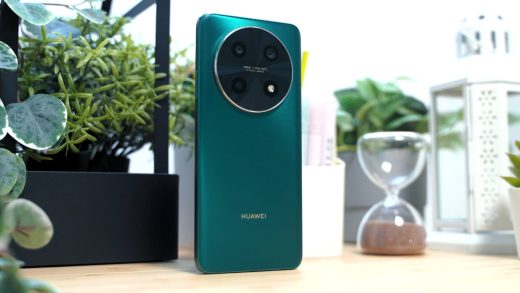Last week, Yahoo! Philippines and Nielsen Online revealed results of their research on “internet habits” for the Philippines. Their study also confirms the dominance of Yahoo! properties in the country which includes email, instant messaging and surprisingly even search.
Take note though that the study was conducted from November to December 2008 and only involved 1,200 respondents from 55 key cities in the Philippines. As such, the numbers represented the best possible figures since it only covered population in urban areas and not rural areas. Nielsen also indicated a +/- 3% margin of error.
Here are some of the results of the study with my own interpretation of the numbers:
- Only 5% of respondents actively use the internet everyday. About 1 out of 4 (28%) have used the internet in the last 30 days. If we apply the 3% margin of error, the 5% daily users could be as low as 2% or as high as 8%. A single digit result is not an appealing number.
- The biggest concentration of internet users is Cagayan de Oro with 35% of respondents from that area have used the internet at least once in the last 30 days. Metro Manila was around 32% if I recall correctly.
- Friendster is still the top social networking site of choice. More than half (51%) of respondents have visited a social networking website in the last 30 days.
- One in 3 Filipino internet users have a blog. If the study meant that an internet user is a person who has used the internet at least once in the last 30 days, then that 1 in 3 can be applied to the 28% above (#1) which gives us about 9% of 1,200 respondents having a blog.
My concern with the study is that, IMO, the sample size of 1,200 seemed a bit small. That, plus the fact that the number is also sub-divided among the 55 cities where they had face-to-face interview with respondents. So, it’s possible that they only had more or less 20 respondents taken from Cagayan de Oro (35% is 7 out of 20).
These numbers do not represent the Philippines as a whole since only respondents from urban areas were taken. Nielsen doesn’t have figures for rural areas but I think it is safe to assume that numbers from those areas are way below the results from above and drag down the percentages signifcantly.
































Hi Jeena,
You can get the full database or specific information only from the Net Index study by contacting any of the Nielsen Media associates below:
The Nielsen Company (Philippines), Inc.
Tel: (+632)706-8100 loc. 8160 / 8248 / 8209 / 8244
Or email: kr.quin****@****.***
Cheers! :)
kenneth
Hi Yuga!
Yeah, as far as i know, the sample size of their survey is good enough. I’m interested as to where I could get a copy of their survey. I’m looking in on the internet behavior here. Where do you think could I get a copy for the Nielsen Survey?
Many thanks!
Thanks for the clarification, Reg.
I have a curious question I thought you might know the answer to. If you were asked to figure out how many people in a city are using the internet, what would be your minimum sample size for say 1 million population like CDO?
Would a sample size of 100 do? Can you do it with less or you’d need more (keep margin of error at +/-5%)?
Hi Abe!
Re: CDO, we really have to look at the sampling algorithm used by Nielsen for this research. There are different ways on how they got the sample (I’m assuming they had a variation of a randomized sampling method.) If 20++ was the number they got, then that’s the algorithm’s call.
As sample sizes go, I guess the number was adopted because it works in theory (i.e. Central Limit Theorem, and all that statistical stuff). How it actually mirrors the real situation in the Philippines is a different story. :)
There’s an earlier figure on Census or something that puts the Urban Population at 48% of the total population of the Philippines.
Given that this research was only done in urban areas, the numbers holds true to only 48% of the country. The other 52% were not included.
My guesstimate is that for the 52% (rural) of the population, the numbers are very much skewed towards the lower end of the bracket.
That means the 28% internet user of the 48% of the population added to the 1% (my number) internet users of the 52% of the population gives us a theoretical ~15% of the total population.
When I saw the numbers reported in the news, the percentage was mistaken as representative of the whole country, not the just urban areas. That basically made the numbers looked promising.
Come to think of it the 5% who use the internet everyday isn’t that bad. In fact, the 28% figure tells us that a lot of us do use the Internet, although not all the time. You left out some interesting tidbits, such as the 71% who access the Internet in cafes and very low e-commerce activity.
IMHO, I believe 1200 is a statistically good sample size.
And a 3% margin of error would mean 4.85% to 5.15%.
in Taiwan, some people even have 2 or 3 blogs at the same time. As a matter of fact some parents and grand-parents never use internet no matter where they live!
at first glance, 20++ for a city like CDO is not impressive. I have a poor grasp with numbers so I cannot make a derivation on how they arrived at that number. but if it (survey) only has +/- 3% margin of error, indeed that is a good number already. my only concern is how these respondents were chosen. I am going to assume that they did this randomly, it should be OK.
my problem is, I don’t thin Yahoo! is really the top search engine that we are using. in your experience guys, do you really think it’s Yahoo! in my company, I know of no one at all who still uses Yahoo! for search. as an instant messenger, yes.
well im from cagayan de oro :p
Hot damn! Only a little creepy.
gizmodo.com/5188715/the-penis-train-when-children-playgrounds-go-very-wrong
Same here. I work in media and have dealt with Nielsen for the longest time. The sample base is sound enough, and having a +/-3% margin of error is a very close confident number for research.
@Regnard, so the sample is already an industry standard? How about the 20+ or so sample for a city like CDO?
I do agree with the opinion [of] Regnard. Just like what our stat teacher told us.
I do agree with the opinion Regnard.
Hi Abe!
While more is still better when it comes to statistical significance, 1,200 is already a good number from a market research point of view– for a population like the urban areas in the Philippines, you’d need around somewhere around 1,100 to have a 95% confidence level for the data results.